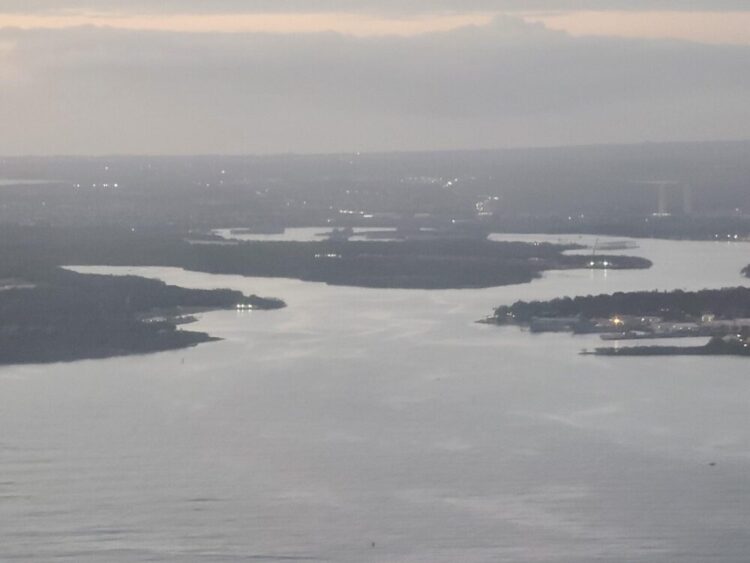Pearl Harbor is contaminated. The military, the regulators, and the community know it.
But the military has defined part of it to be contamination free using curious logic.
The military asserts that the Pearl Harbor watershed covers 20% of Oahu, that industrial, agricultural, and residential pollution enters the bay from numerous streams, mixing with military pollution. This has lead to widespread contamination of the harbor.
If a military site on land has a known contaminant and there is a known path that could have led to contamination of a small section of the harbor, then the sediment in that area may be checked for contamination. All other areas are assumed to be pollution free.
Pearl Harbor was declared a Federal Superfund site in 1985 and placed on the National Priorities List (NPL). Military Restoration Advisory Boards (RABs) were established in the 1990s.
The RABs included military and community co-chairs, ex-officio regulators, and community members. Life of the Land served on army, navy, and air force boards since the 1990s, and its Executive Director is currently community co-chair of the Joint Base Pearl Harbor Hickam Kalaeloa RAB.
Generally, the U.S. Environmental Protection Agency (EPA) goes along with the military, the Hawaii Department of Health sits on the sidelines, and the Honolulu Board of Water Supply raises concerns that needed to be raised.
Background
The harbor has been polluted for over 100 years.
Prior to World War 2, Pearl Harbor had a 30-month supply of fuel oil stored in above ground tanks next to the submarine base. President Roosevelt was concerned about the vulnerability of the above ground fuel tanks. The administration decided to build new underground facilities in 1940 that would store more fuel and be safe from an enemy aerial attack.
The three biggest tanks were built in mauka areas on O`ahu. All became operational in 1943.
Red Hill Facility has 20 tanks each with a capacity of 12,700,000 gallons. The design capacity is 187,000,000 gallons.
Waikakalaua Fuel Storage Annex In Wahiawa had nine tanks each with a capacity of 1,765,000 gallons for a total capacity of 15,885,000 gallons.
Kipapa Gulch Fuel Storage Annex In Waipio had four tanks each with a capacity of 2,650,000 gallons for a total capacity of 10,600,000 gallons. The horizontal tanks were each more than three times the length of a football field.
The 20-mile Hickam Petroleum, Oils and Lubricants (POL) pipeline connected the Waikakalaua Fuel Storage Annex and the Kipapa Gulch Fuel Storage Annex with Hickam Air Force Base. The pipeline crosses several streams that drain into the lochs of Pearl Harbor.
The pipeline initially carried AVGAS, then MOGAS, JP-4 and JP-8. The storage tanks were cleaned every eight to ten years. The residual tank sludges were buried on-site.
The military reported that 18 billion gallons went up, 14 billion gallons came down, and the system is now empty. The missing 4 billion gallons may have sunk, evaporated, been stolen, or was just bad accounting.
The next Pearl Harbor RAB hybrid (zoom, in-person) meeting is scheduled for December.
The agenda is a joint product of the two co-chairs. The community co-chair proposed that the meeting focus on two issues: Navy Rationale for Pathway Analysis and a Holistic Underground Plume Review. Identifying how contamination moves underground is critical to determining how aggressively the contaminant must be removed to protect drinking water sources.

